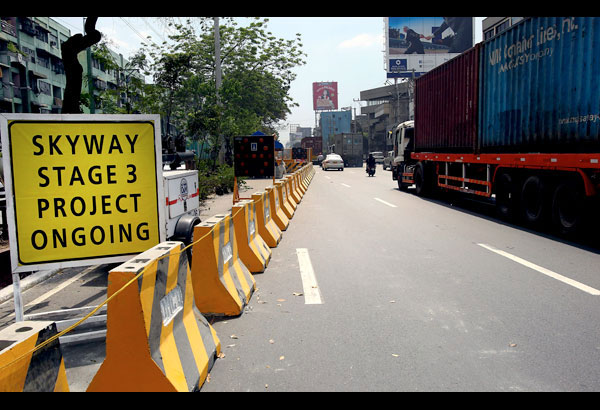Biggest roadblock to growth: Aviation players lament infra mismatch in Philippines
March 14, 2016 at 09:38
Biggest roadblock to growth: Aviation players lament infra mismatch in Philippines
(The Philippine Star) | Updated March 10, 2016 – 12:00am

During the recently concluded Routes Asia 2016, airline executives urged policy makers and airport authorities to respond to infrastructure needs as it is a crucial component not just for Philippine growth, but for the whole of the Asia-Pacific region. File photo
MANILA, Philippines – Infrastructure remains the biggest roadblock to the country’s continued growth and development, even as the travel and tourism sector continues to gain momentum, global aviation players said.
During the recently concluded Routes Asia 2016, airline executives urged policy makers and airport authorities to respond to infrastructure needs as it is a crucial component not just for Philippine growth, but for the whole of the Asia-Pacific region.
“Infrastructure is the biggest issue. There is a widening mismatch between airport infrastructure plans and the rapidly growing demand for low-cost carriers,” HK Express chief executive officer Andrew Cowen said.
“With the continued growth comes extreme situations in many airports around the region and one of which is over-capacity. And majority of over-capacity airports are in Asia,” Routes Asia content and industry relations head Michael Miller added.
Furthermore, Mactan-Cebu International Airport chief executive officer Andrew Harrison considers the development of regional airports as economic engines for the overall growth of the country.
“A market like the Philippines has a lot of opportunities that can spur tourism and other economic activities. Regional airports connect the country to various markets that would help the economy to grow further,” he said.
Transportation and Communications Secretary Joseph Abaya, for his part, said the government continues to implement initiatives and infrastructure projects to absorb and promote growth, including the completion of the rehabilitation of Terminals 1 and 2 of the Ninoy Aquino International Airport.
“The traffic congestion at NAIA is the consequence of the increased flying public. But we have consulted a British firm to help us optimize runway use with our main goal to safely increase air traffic movement and thereby allow more aircraft and passengers,” Abaya said.
Several airports outside Metro Manila are also being readied as part of the government’s public-private partnership (PPP) program such as in Iloilo, Davao, Bohol, Bacolod and Laguindingan.
Aside from infrastructure, Cebu Pacific commercial planning vice president Alexander Lao said there is also a need to focus on safety, manpower, and striking a balance between the public and private partnerships for airports to help meet the growing low cost market.
Meanwhile, air travel continues to grow at an average rate of five percent since 2011 and airlines are expected to acquire 38,000 aircraft valued at $5.6 trillion towards 2034.
Boeing managing director John Schubert said Southeast Asia alone would need 3,750 new airplanes worth $550 billion while Asia-Pacific has to acquire 675 new aircraft each year for the next 20 years as the region is seen to generate over 100 million new passengers annually.
“The Philippines is up to meet the challenge of a rapidly growing aviation industry in the region over the next decade. Tourism and aviation policies should be aligned to enjoy the full dividends of the industry,” Department of Tourism (DOT) Undersecretary Benito Bengzon said.
Routes Asia 2016 is the largest aviation event in the region and is targeted to position the Philippines as a multi-gateway destination to utilize regional airports, particularly Clark and Boracay, and improve tourist flow from key source markets.
Source: www.philstar.com/business




























